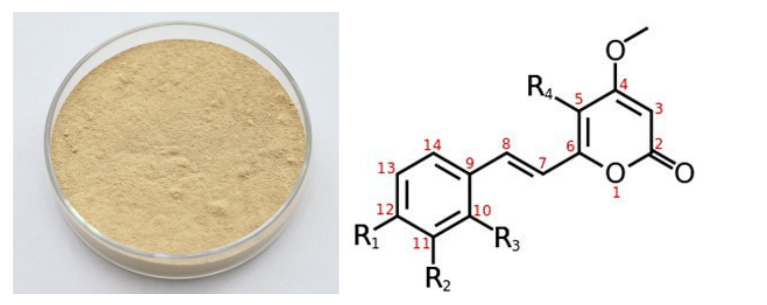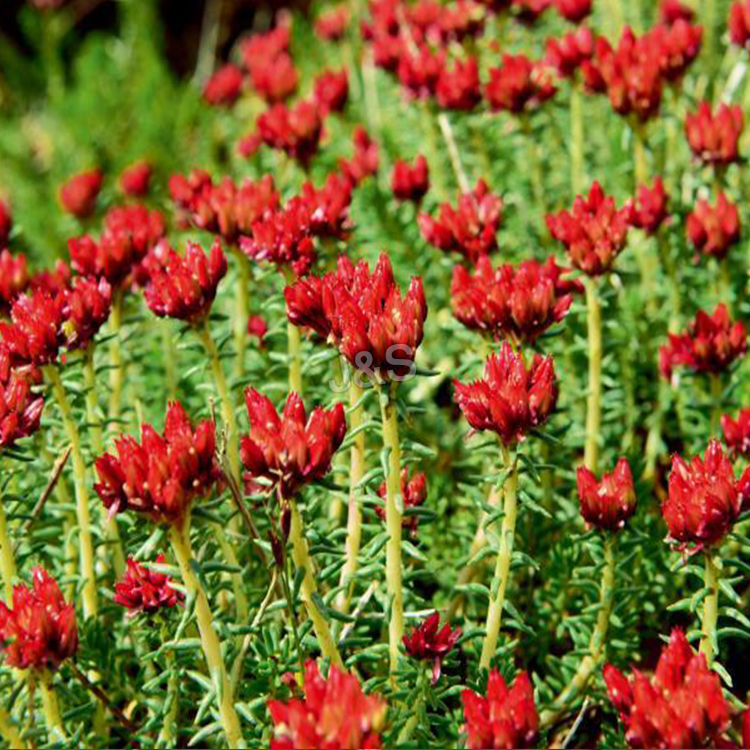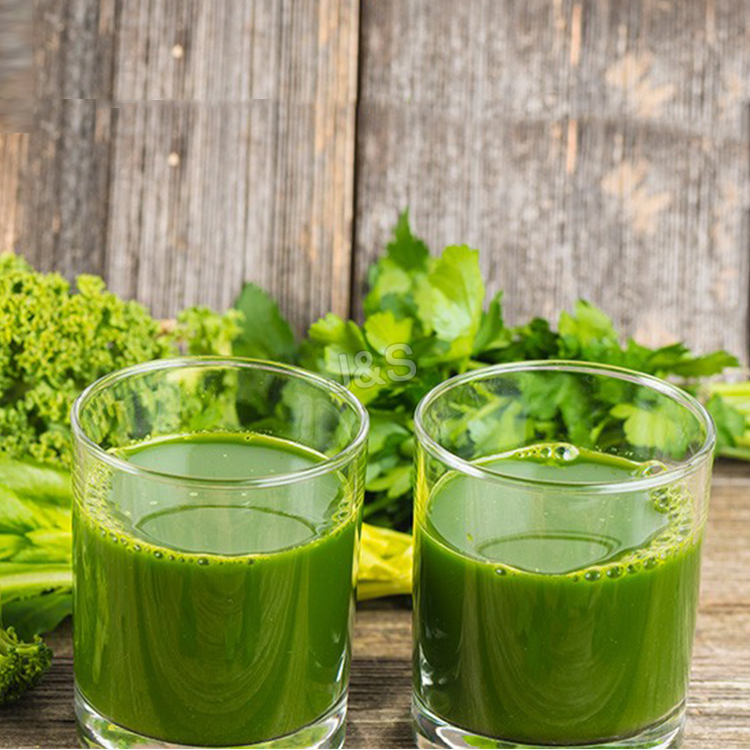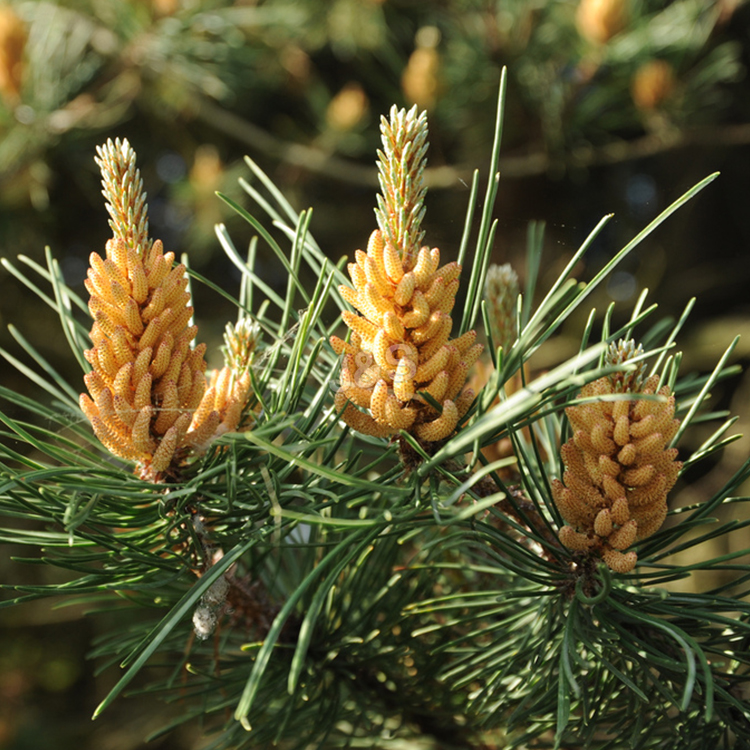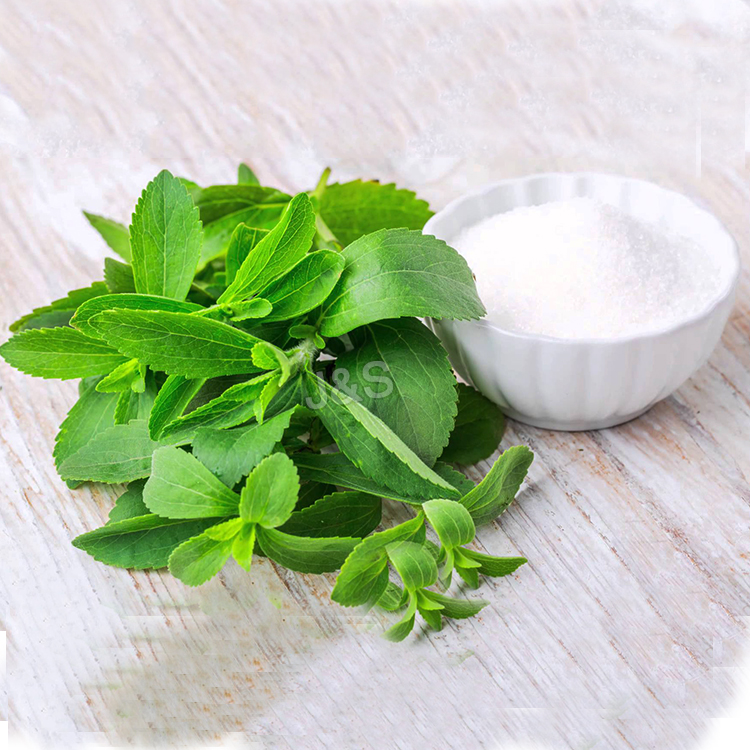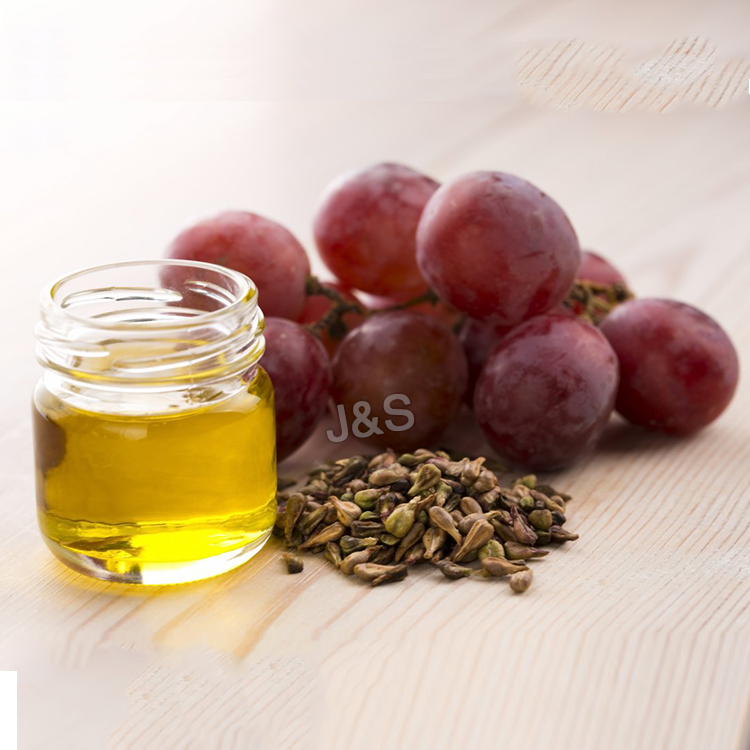11 Years Factory wholesale Kava Extract Factory for Mauritius
11 Years Factory wholesale Kava Extract Factory for Mauritius Detail:
[Latin Name] Piper methyicium L.
[Specification] Kavalactones ≥30.0%
[Appearance] Yellow powder
Plant Part Used: Root
[Particle size] 80Mesh
[Loss on drying] ≤5.0%
[Heavy Metal] ≤10PPM
[Storage] Store in cool & dry area, keep away from the direct light and heat.
[Shelf life] 24 Months
[Package] Packed in paper-drums and two plastic-bags inside.
[Net weight] 25kgs/drum
[What is Kava?]
Kava, also known as piper methysticum, kava kava, and ‘awa, is a small shrub native to the islands in the South Pacific. The root and stems are made into a non-alcoholic, psychoactive beverage that has been used socially and ceremonially for hundreds of years in Hawaii, Fiji, and Tonga.
Kava is traditionally prepared by placing ground root and stem into a porous sack, submerging in water, and squeezing the juice into a large, carved, wooden bowl. Coconut half-shell cups are dipped and filled — punch bowl style. After drinking a cup or two a feeling of heightened attention combined with relaxation begins to come on. Although it is soothing, it is unlike alcohol in that thoughts remain clear. The flavor is largely inoffensive, but some find that it takes getting used to; it really depends on your preference for earthy flavors.
[Kava is Safe to Use]
The safe and effective benefits of kava to relieve symptoms of anxiety were also supported in a meta-analysis, a systematic statistical review of seven human clinical trials published in 2000 in the Journal of Clinical Psychopharmacology, and again in a similar critical review in 2001. The reviews did not find significant adverse effects related to liver toxicity.
In conclusion, the liver is affected by many substances, including prescription and non- prescription drugs, as well as alcohol, which is a major cause of liver damage. We must be aware that herbs are potent medicines, to be treated with the appropriate respect regarding potential interactions and toxicity, including to the liver. On the other hand, Kava kava’s margin of safety far surpasses that of it’s pharmaceutical equivalent.
[Function]
Kava’s can help offset a number of problems, most notably stress, anxiety, and disrupted sleep patterns. However, kava’s anxiolytic (anti-panic or anti-anxiety agent) and calming properties can offset many other stress and anxiety related ailments.
1. Kava as a Therapy for Anxiety
2. Kava May Remedy Menopausal Mood Swings
3. Weight Loss
4. Combat Premature Aging
5. Quit Smoking Aid
6. Combat pain as an analgesic
7. Insomnia
8. Depression
Product detail pictures:

Related Product Guide:
Normally customer-oriented, and it's our ultimate concentrate on for being not only one of the most dependable, trustable and honest supplier, but also the partner for our shoppers for 11 Years Factory wholesale Kava Extract Factory for Mauritius , The product will supply to all over the world, such as: Jamaica, Luxembourg, Italy, Due to our good goods and services, we've received good reputation and credibility from local and international customers. If you will need more information and are interested in any of our solutions, be sure to feel free to contact us. We look forward to becoming your supplier in the near future.
Stevia grows best in upland areas in sub-tropical climate. In other places it can be grown as an annual. The plant prefers a lightly textured, well-drained soil to which organic matter has been added. It needs ample water so that the soil is consistently moist, but not wet. In hot, sunny climates it will do best in semi-shade. Propagation is from seed sown in spring, but germination rates can be low-expect half the seeds sown not to germinate. Plant seedlings out once all danger of frost is over. Leaves are best harvested just before flowering. The plants will also grow from cuttings,which are best taken in late winter.The concentration of stevioside in the leaves of Stevia increasing when the plants are grown under long day condition.While, cultivating stevia on a large scale, it can be grown in well-drained red soil and sandy loam soil. The soil should be in the pH range of 6.5-7.5. Saline soils should be avoided to cultivate this plant.
Stevia can be successfully cultivated all around the year all over India expect theareas, which receive snowfall, or temperatures go below 5 degree Celsius in winter.The summer temperatures actually do not affect this plant if the high summer temperatures have already been factored in the cultivation practices.Since seed germination rate is very poor,it is propagated vegetative. Though stem cuttings are used for vegetative tissue culture plants have proven to be the best planting material for Stevia. Tissue culture plants of Stevia are genetically pure, free from pathogens and haveexcellent vigor. The tissue culture plants can be planted throughout the year,expect during peak summer. An ideal planting density is 40,000 plants per acre with spacing of 25×40 cm in a raised bed system. The soil can be enriched with abasal dressing of 25 tons of well rotten farmyard manure/hectare
Soil Type
Stevia requires very good drainage any soil that retain the moisture for very long period of time are unsuitable for Stevia cultivation and should be religiously avoided.Red soil and sandy loam with a 6-7 pH are best for the cultivation of Stevia.
Raised bed preparation
Forming raised beds is the most economical way to grow Stevia. The raised bed should be of 15 cm in height and 60 cm in width. The distance between each plant 23 cm. This would give a plant population of around 40,000 per acre.
Planting Material
There are basically two options for multiplication. The first is the tissue culture and second the stem cutting. Tissue culture is the best option but many farmers are tempted to try the stem cutting method for multiplication. As per practical experience, stem cutting is sometimes more expensive to produce than the tissue culture since the success rate of the stem cuttings establishment is very low, it takes minimum of 25 weeks for the stem cutting to develop in proper feeding roots for transplantation (younger stem cuttings transplants have shown more than 50% mortality in first few weeks of transplants in main field).
Harvesting
Another important aspect of harvesting is the timing of harvest. It should be noted that at no point of time plants should be allowed to flower since after flowering the Stevioside percentage goes down rapidly and leaves are rendered unmarketable. Leaves are harvested by plucking in a small quantity, or the entire plant with the side branches is cut leaving 10 to 15 cm from the base.The first harvesting can be done four to five months after planting. Subsequent harvesting can be done every three months, for five consecutive years. The sweetener in the leaf is maximum till the plant flowers. Just before flowering, the plant should be cut completely leaving 10 cm from the ground. The new flush of leaves will sprout from here. The new plant will be ready for harvest again in three months. The plant yields around 3000 kg of dried leaves from an acre of plantation every year. Harvesting should be done as late as possible, since cool autumn temperatures and shorter days tend to intensify the sweetness of the plants as they evolve into a reproductive state.
Unlocking the sweetness in your harvest
Once all leaves have been harvested it’s required to dry them. This can be
accomplished on a net. The drying process is not one that requires excessive heat;more important is good air circulation. On a moderately warm fall day, stevia crop can be quick dried in the full sun in about 12 hours. (Drying times longer than that will lower the stevioside content of the final product.)
Crushing the dried leaves is the final step in releasing stevia’s sweetening power. The
dried leaves are powdered, sieved and the fine powder is stored in containers. This can be done either by hand or, for greater effect, in a coffee grinder or in a special blender for herbs.
Web: https://www.natureherbs.org | www.natureherbs.co
Email : natureherbs@ymail.com
Watsapp: +91 841 888 5555
Skype: nature.herbs
Presenting, TOP 10 SUPERFOODS FOR LIVER CLEANSING
1. Grapefruit
Being a good source of vitamin C, pectin and antioxidants, grapefruit also aids the natural cleansing process of the liver.
It also contains glutathione, a powerful antioxidant that neutralizes free radicals and detoxifies the liver. Glutathione also helps in the detoxification of heavy metals. Moreover, the flavonoid naringenin in grapefruit helps break down fat.
2. Green Tea
By drinking green tea daily, you can help your body flush out toxins and fat deposits, while increasing hydration levels.
Green tea is also beneficial in treating or preventing liver disease. According to a 2009 study published in Cancer Causes and Control, people who drink green tea have a lower risk of developing liver cancer.
Drink 2 to 3 cups of green tea daily. If desired, sweeten your tea with honey.
3. Broccoli
Support the natural liver-cleansing process by including broccoli in your diet. Being rich in glucosinolates, it helps flush carcinogens and other harmful toxins out of the body.
The high fiber content in broccoli also improves the digestion process. Moreover, it contains fat-soluble vitamin E, an important antioxidant for the liver to carry out its functions
4. Turmeric
Turmeric is another popular and effective liver-cleansing food. It also improves the body’s ability to digest fats.
The compound curcumin in turmeric induces the formation of a primary liver detoxification enzyme called glutathione S-transferase. It also helps regenerate damaged liver cells.
5. Apple
An apple a day is the secret behind a healthy liver. Apples are a good source of pectin, a soluble fiber that helps remove toxins from the digestive tract and cholesterol from the blood, in turn preventing the liver from being overworked.
Moreover, apples contain malic acid, a naturally cleansing nutrient that removes carcinogens and other toxins from the blood.
6. Garlic
Garlic is great for cleansing your liver. It helps activate enzymes in the liver that help clear out toxins. It also contains two natural compounds called allicin and selenium, which aid in the liver-cleansing process and protect the liver from toxic damage.
Moreover, garlic reduces cholesterol and triglyceride levels, which can overload the liver and hamper its functioning.
7. Walnuts
The high amount of the amino acid l-arginine in walnuts aids the liver in detoxifying ammonia. Moreover, walnuts contain glutathione and omega-3 fatty acids, which aid the natural liver-cleansing process.
8. Avocados
Avocados contain potent chemicals that may reduce liver damage, according to a 2000 study by the American Chemical Society. This fruit is rich in glutathione, a compound required by the liver to cleanse harmful toxins and to function properly.
Moreover, avocados contain many minerals, vitamins and plant nutrients that support overall liver health and help break down fats.
9. Lemons
Lemons help detoxify the liver mainly due to the antioxidant D-Limonene present in it, which helps activate enzymes in the liver that aid detoxification.
Moreover, the high amount of vitamin C in lemons helps your liver produce more enzymes to aid digestion. Lemons also boost mineral absorption by the liver.
10. Beetroots
Beetroots are another powerful food for cleansing and supporting liver function. High in plant flavonoids and beta-carotene, they help stimulate and improve overall liver function. Moreover, beetroots are natural blood purifiers.
Stay connected & don’t forget to share ![]()
The manufacturer gave us a big discount under the premise of ensuring the quality of products, thank you very much, we will select this company again.
